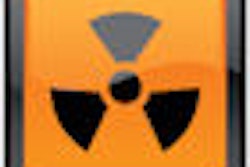Tuesday, December 1 | 10:50 a.m.-11:00 a.m. | VE31-09 | Room S103CD
The use of x-ray is standard practice in many facilities for young patients presenting with acute abdomen, but it doesn't always do the job."When you try to exclude certain diseases such as free abdominal air or certain gas patterns in the abdomen as a surrogate for diagnosing ileus bowel obstruction or kidney stones, it's standard protocol to perform conventional x-rays -- which always bugged me because there's a limited amount of information you can get," Dr. Patrick Rogalla from the University of Toronto and Toronto General Hospital told AuntMinnie.com.
The study performed at Charité Hospital, Berlin, aimed to replace x-ray with ultralow-dose CT on 16- and 64-detector row scanners (Aquilion, Toshiba Medical Systems, Tokyo) at 120 kV, 10-40 mA, dose modulation, 0.5-mm slice thickness for three specific pediatric indications: rule out bowel obstruction, hollow organ perforation, and urolithiasis.
Rogalla, along with Dr. Christian Kloeters, Dr. Bernd Hamm, and colleagues, examined 54 consecutive patients presenting to the emergency room with acute abdomen and one of three indications. At such low dose settings "there is a terrific amount of noise" and radiologists may consider the images nondiagnostic, Rogalla said. So while it wouldn't be practical to assess liver lesions with ultralow-dose CT, it works fine for the three indications in the study, he said. Radiation dose varied between 0.3 and 0.9 mSv.
Except for disagreement in one patient (reader 1: perforation; reader 2: obstruction) all diagnoses were in agreement and correct, Rogalla said. "CT can be performed at an x-ray dose but serves better than x-ray by allowing for more diagnosis than x-ray allows, so there is no penalty but there is more diagnostic information," Rogalla said.




















